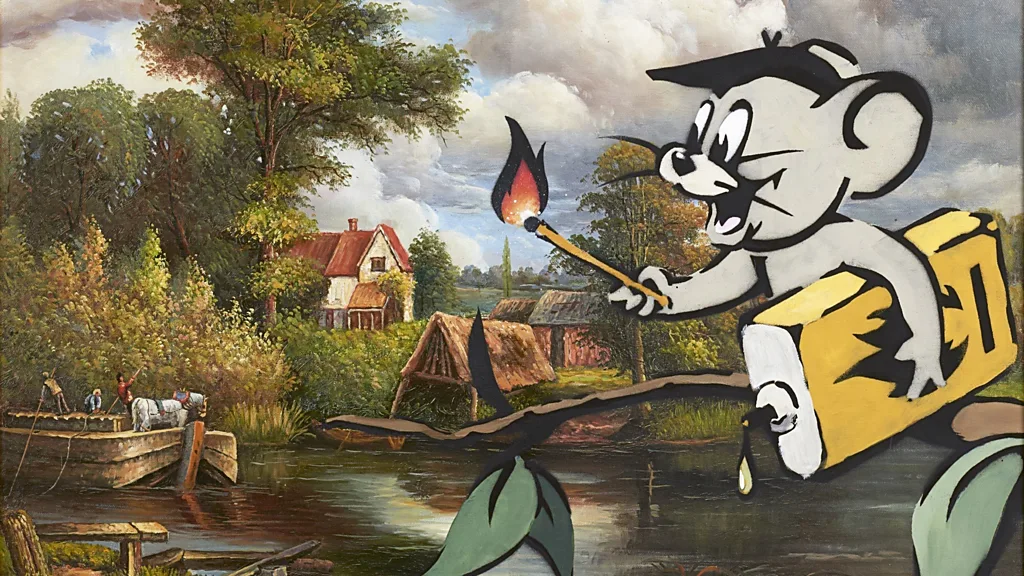Banksy, Crude Oil Jerry, 2003 (Credit: Private Collection)
As a string of new Banksy artworks spring up around London, an expert reveals the clues that unlock his art historical genius.
Is Banksy a great artist? When a series of stencilled animals, suspended in silhouette, suddenly began to appear across London in early August, one a day for a week and a half, a chorus of headlines the world over asked: what do they mean?
Warning: This article contains language that some may find offensive.
Was the surprise rash of paintings from Kew Bridge to Peckham – a spree that featured a goat, two elephants, three monkeys, a wolf, two pelicans, a cat, a tank of piranhas, a rhino, and a gorilla helping a gang of beasts break out of London Zoo – nothing more than a static stampede of frivolous fun let loose in the dog days of summer? Or does the sequence contain hints of a deeper message and, just possibly, a clue to what Banksy has been up to all these years?
Having studied every inch of the street artist’s back catalogue for my new book, How Banksy Saved Art History, which explores how his work rewrites the story of art from prehistoric cave paintings to Pop Art, I was intrigued to see where this fresh trail of spray paint might lead us. What I found is that, as ever with Banksy, there is more than meets the eye. Take the City of London police box, the target on Sunday 11 August of the seventh instalment in this series. Banksy’s intervention into the urban object wasn’t nearly as playful as it seemed. Far from simply showcasing a “school of swimming fish”, as initially reported, the circling creatures formed a ghostly shoal of ghoulish piranhas waiting to strike.
By submerging users of the police box in a menacing tank filled with ferocious fangs, Banksy not only echoed the famous formaldehyde-soaked shark by fellow British artist, Damien Hirst (with whom he has collaborated in the past), but took Hirst’s work to the next level of meaning. Thirty-three years since Hirst first unveiled his vicious vitrine, that once-shocking shark has begun to lose its bite. By updating the YBA icon and resharpening its resonance in the context of policing, Banksy rehabilitates a work whose relevance was a little long in the tooth.
This is what Banksy does best and what elevates his work above perishable pranks: he re-inflects fatigued masterpieces with a pertinence we have ceased to believe they could have. Far from defacing or demeaning the artists into whose works he regularly intrudes, from Leonardo to Basquiat, Banksy invites us to look again at what makes them great. What follows is a selection from my new book of some of the most powerful examples of how Banksy has duffed up art history, shoved it against a wall in the dead of night, and, in doing so, reinvigorated it.

